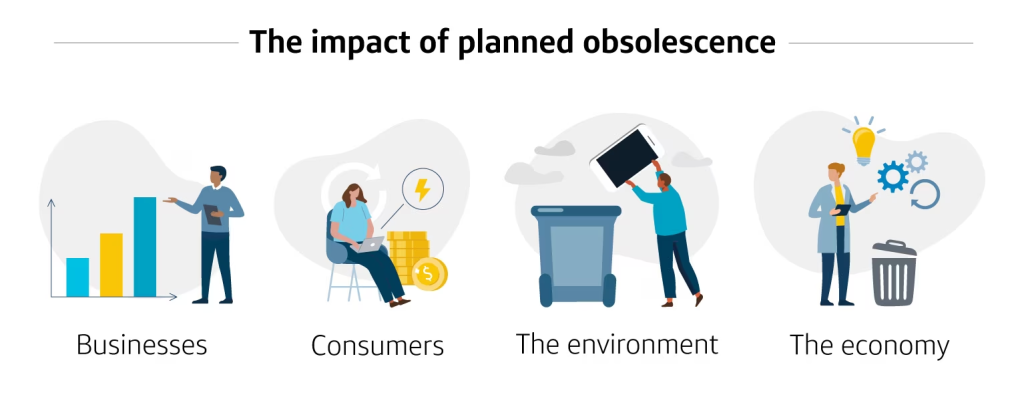What is Planned Obsolescence?
Planned obsolescence refers to the strategy where manufacturers design products with a limited lifespan, encouraging consumers to replace them sooner than necessary. This practice is common in the electronics industry, where products like smartphones, laptops, and appliances are often built to last just a few years before becoming outdated or failing.

An Overview of Electronic Waste
The result of planned obsolescence is a significant increase in electronic waste (e-waste). Millions of tons of discarded electronics end up in landfills each year, contributing to environmental pollution and resource depletion.
E-waste contains hazardous materials, like lead and mercury, which can leach into the soil and water, posing health risks to humans and wildlife. Moreover, valuable metals like gold, silver, and copper are lost when these devices are not properly recycled. The high carbon footprint caused by the production of electronic devices is also a major and disastrous result of a restless consumption of technological devices, especially because of mining activities.
Recent Regulations in Quebec
In response to the growing problem of e-waste, recent regulations have been implemented in Quebec to protect the consumer from planned obsolescence and promote sustainability. As of today, such legislative efforts have not been observed elsewhere in North America.
In Quebec, Bill 29, which came into effect in October 2023, requires manufacturers to disclose information about replacement parts, repair services and information that are necessary to maintain or repair the goods sold or leased. These regulations aim to strengthen consumers’ “right to repair” by improving warranties transparency and effect, and ensuring merchants make repair pieces or repair services readily available to consumers.
Tips to Take Care of Our Electronics
While these regulations are a step in the right direction, the burden still falls on consumers to contact the manufacturer if any issues arise with their product. However, you can take action on your own to help mitigate the effects of planned obsolescence. Here are some tips to help extend the life of your electronics:
- Protection and Regular Maintenance: protect your gadgets from physical damage with cases and screen protectors. Clean your devices regularly to prevent dust buildup.
- Avoid Overcharging: unplug devices once fully charged to preserve battery life; battery life draining fast is a major element why people change cell phones.
- Resist marketing appeals: some telecommunication services providers give you strong incentives to switch to another phone after two years, while your current device is still properly functional.
- Stay Informed: follow software updates that enhance security and functionality without straining hardware.
By taking these steps, we can help reduce electronic waste and make more sustainable choices.

References
https://www.cbc.ca/news/science/planned-obsolescence-1.5847168
https://montrealgazette.com/news/quebec/quebec-passes-bill-outlawing-planned-obsolescence
https://www.assnat.qc.ca/en/travaux-parlementaires/projets-loi/projet-loi-29-43-1.html?appelant=MC
https://www.nytimes.com/wirecutter/reviews/how-to-make-your-phone-last-longer


Leave a Reply